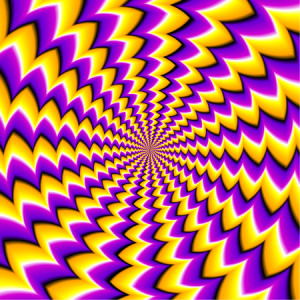Posted by: Georgia Eye Physicians and Surgeons in Latest News
We’ve all heard the phrase “seeing is believing”, but one of the most interesting things about vision is that what we perceive as being “real” is not actually an objective representation of what is out there in reality. In fact, our perceptions are actually the result of complex interactions between the eyes and the brain, where information is interpreted or even distorted to allow us to interact with the outside world more effectively. These editorial changes largely happen on an unconscious level, so that we are usually completely unaware that they are even going on. However, the optical illusions that occur when these visual revisions go awry make it clear that what we see is not necessarily what we get.

The brain also plays tricks with how we see color as well. Most people who have interacted at all with the internet in the past year are familiar with the controversy surrounding “the dress.” A picture of a blue-and-black dress posted on-line drew millions of comments when about 30% of people reported seeing it as white-and-gold. Scientists have theorized that this is the result of color constancy, a characteristic of our visual perception that allows us to recognize the color of an object despite changing light conditions. Simply put, the light around us is constantly changing. When we see a banana, for example, under natural sunlight or in deep shadow the colors reaching our eyes are actually very different. The brain, however, which has learned to expect that a banana will always be a certain color, naturally edits certain wavelengths of light out of our perception so that what we see more closely resembles what we expect. In the case of the dress, some brains assumed the picture was being lit by natural light, and so interpreted the image as one set of colors, while others assumed it was being lit by artificial light, and so saw a different set of colors entirely.
There are many other forms of optical illusion, but even these tiny mistakes in perception give us valuable glimpses into the way our vision works and can provide extremely helpful diagnostic information to help treat eye diseases and visual problems. If you have any questions or concerns about your vision, or if you would like to schedule an eye exam with Dr. William Segal or Dr. Marc Lay, please contact Georgia Eye Physicians and Surgeons today to make an appointment. Be sure to follow us on Facebook, Twitter, and Google+ for more information on how to keep your vision healthy.

